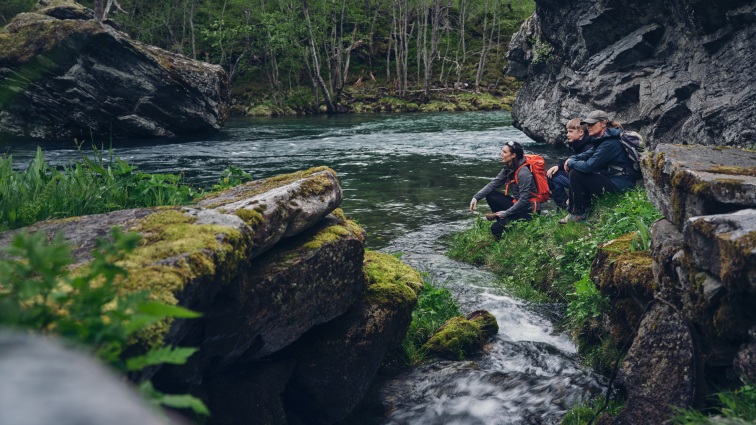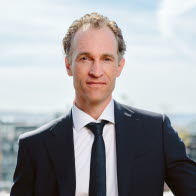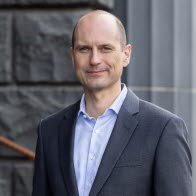Mission to spur the energy transition

Some people thrive on complexity – when issues are anything but self-explanatory. This is true for energy experts Atle Røren and Joel Skagerberg at SEB, a duo dedicated to help their clients in making a safe and orderly transition of our energy systems.

When listening to SEB’s Atle Røren, Head of Energy Coverage, and Joel Skagerberg, Head of Project & Infrastructure Finance, the intricacies of the field they operate in become clear.
On the one hand, 2023 is described as a “fantastic year” for renewables, with unprecedented capacity installed. On the other hand, it also coal demand was at historically high levels. Moreover, while plenty of new energy infrastructure is needed, building it often stirs controversy – “there will always be detractors in large infrastructure projects, claiming wind farms are noisy, biofuels smelly or transmission cables ugly”.
But none of this puts Atle Røren off.“I find energy systems fascinating. They are complex and exciting to learn about. They also form the foundations upon which our industry is built, where jobs are created, and the tax income that makes up the basis for our welfare societies is generated.”

Joel Skagerberg is of a similar meaning.
“Within Project & Infrastructure Finance at SEB, we cover everything from telecom to transportation infrastructure. But energy is the biggest sector. These clients are ambitiously trying to provide enough energy for our home markets and to make a safe and orderly transition of our energy systems, which is an enormous undertaking. It is all very exciting.”
Fascination, excitement. But how are we doing on the transition journey, then? Are we on the right track towards net zero emissions?
We can reach net zero, but I think the carbon budget demands of a 1.5-degree target will likely be breached and then perhaps re-won. Currently, the IEA has targeted peak power demand in 2025 and a 50 per cent reduction in emissions in the five years following.
There are good news, and there are bad news…
According to 2022 Eurostat figures, 23 per cent of the EU’s energy consumption was renewables. The Nordic countries were at the top of the pile, with Sweden at 66 per cent, Finland at 48, and Denmark at 42. Norway was at 76 per cent*. Yet, all is not sunshine and a gentle breeze.
“In the Nordics, we have been above the EU target of 40 per cent renewables for quite some time. Still, over the last few years, we have seen some side effects of our ambition to push renewable power into the system. The intermittent nature of the solar wind supply is causing issues with predictability, making prices more volatile and generally higher", Atle Røren says.
According to Atle, this underlines the need for reliable base load power solutions.
“Solar energy can provide power to the grid only 12 per cent of the time, offshore wind slightly over 50 per cent and land-based wind power about 30 per cent. Base load power is able to compensate for such gaps and can consist of large hydropower, where possible, as well as nuclear power.”
Although it is a fossil fuel, Atle underlines that gas will play a major part in the transition.
“The need for balancing through reservoirs, peak load installations, or batteries is crucial, and in a wider European context, we should not forget about the important role gas plays as a transition fuel. A new gas power plant can, in fact, reduce emissions by nearly 90 per cent compared to coal.”
How are we doing globally – can we reach net zero emissions by 2050?
“We can reach net zero, but I think the carbon budget demands of a 1.5-degree target will likely be breached and then perhaps re-won. Currently, the IEA has targeted peak power demand in 2025 and a 50 per cent reduction in emissions in the five years following.”
From Atle’s perspective, peak power demand is much further down the road, and the increased energy demand in poorer countries is unlikely to be met by clean energy.
“Remember Hans Rosling’s TED talk on the washing machine? Rosling talks about population- and economic growth as drivers of future energy needs. He mentions that five billion people still walk for miles to do their laundry. Eventually, they will want washing machines too. But more people getting electricity, washing machines, and so on, will greatly boost the energy needs. At the same time, heavy investments in clean energy will be a tough challenge for the world’s poorest countries.”
So, would you say you have a pessimistic view?
“No, I would say I am hopeful. I believe we will reach zero emissions later, perhaps helped by some technological breakthrough humans are so good at.”
Energy is the second biggest business area in the SEB Group after real estate. We are the largest energy project finance bank in the Nordics and have a strong position in Northern Europe as a whole. Our involvement includes wind, solar, and hydropower. SEB is also active in developing carbon capture and storage, where we currently see exciting progress.
The SEB approach to renewable energy financing
A full transition of our energy systems does, naturally, crave financing. Plenty of financing. According to the SEB duo, the bank strives to do its part.
“Energy is the second biggest business area in the SEB Group after real estate. We are the largest energy project finance bank in the Nordics and have a strong position in Northern Europe as a whole. Our involvement includes wind, solar, and hydropower. SEB is also active in developing carbon capture and storage, where we currently see exciting progress”, Joel Skagerberg says.
How do you decide on whether to finance a project?
“We look at the key risks involved. Does the company in question have all the competencies and resources needed? Are the permits in place, are the other project risks allocated to the right parties, and are there any agreements with buyers of the end product? We want to ensure that our financing is provided to sponsors with true ability and creditworthiness, and, as a bank, we do not supply the most risk-willing capital out there. Our goal is to help, but do it responsibly”, Joel says.
Atle Røren adds:
“The amount of money required is almost unfathomable, and banks cannot fill that entire need alone. Both governments and private investors have a considerable role. However, we can also help facilitate these transactions – aiding investors and energy companies in finding a way forward through our financial expertise. Overall, we are on a mission to accelerate the pace of the transition.”
*Source: Statistics | Eurostat (europa.eu)
Contact SEB's Energy Team
Our Energy Team, including Energy Coverage and Project & Infrastructure Finance, consists of experienced energy bankers who understand the full scope of the energy transition and its challenges. We are organised by products and geographies to best meet the needs of our Large Corporate and Financial Institution clients.
Reach out to our Energy Team via our local home market pages
